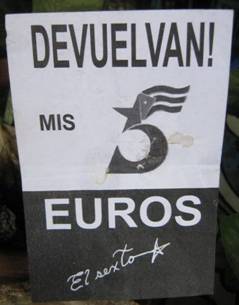The historical memory of a people is essential to achieve cohesion and unity. It is formed by positive and negative events and by their main protagonists through the ages. It is a continuous process without exclusions or black holes. It is not possible for us to imagine the world today without its philosophers, politicians, economists, travelers, soldiers, artists, inventors, scientists, etc., over the centuries, nor can we imagine it without the wars, epidemics, tragedies, persecutions, etc., that have also taken place.
Every people has its particular history , and together they form the history of the world. In the disappeared socialist world, beginning with the extinct Soviet Union, was established the nefarious custom of revising history, hiding or eliminating events and people considered inconvenient to the newly established ideological and political system. This practice, over time, constituted a criminal manipulation that deformed historic memory. This, they removed critical events and important people, occupying those spaces by events and people agreeable to the new power.
Cuba, as might be expected, was not and is not an exception to the rule. From the earliest days of the year 1959 until today, there has been a systematic removal and replacement of our historical memory, encompassing not only the sphere of thought, but also reaching the absurdity of demolishing statues and monuments, even without considering their artistic value.
Examples abound: the statues of the Avenue of the Presidents and the Paseo, of Alfredo Zayas Park behind the Presidential Palace, the monument to Maine, etc., in addition to renaming streets and avenues, parks, schools, shops, theaters, hospitals, factories, recreation centers and other places. In their eagerness to erase everything, those in power have tried to do away with fifty-six years of republican history, trying to artificially unite the wars of independence of the nineteenth century with the insurrection of the mid-twentieth century, which enabled them occupy the country. In this crazy intention, they juggle facts and figures, twist others, and on their pedestals are installed events and characters of their liturgy.
Nor have historical dates been respected, officially being replaced by others, certainly less transcendent, but in correspondence with the new history that they have tried to write, against the grain of reality and truth, for the sole purpose of enhancing facts and characters, and historically legitimizing the established model. In this distortion of the national memory, mere skirmishes of the insurrection have been turned into combat and combat into battles, all overflowing with heroism, and the real battles of our history — depending on political expediency and the characteristics of its central figures — have been either exalted or annulled. So we talk about some facts of Maceo and Maximo Gomez, but others of Agramonte and some patricians are silenced, including those up to Calixto Garcia and the end of the war in Loma de San Juan, at the gates of Santiago de Cuba, Cubans and Americans fighting together against the Spanish, which is obvious.
If we consider the official history, Cuba has only been a country of warriors and war, ignoring all our scientific, medical, educational, artistic and other events, spheres where from the earliest times great personalities stood out, people like Arango, Delmonte, Saco, Luz y Caballero, Heredia, Poey, Romay, Finlay, Brindis de Salas, Varela, Varona, Aballí and others. To erase the historical memory has been a task that has engaged many submissive servants, used as efficient tools. To make it known to our citizens must be the work of honest men.
December 16 2011

